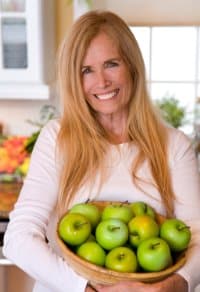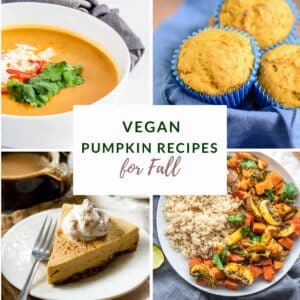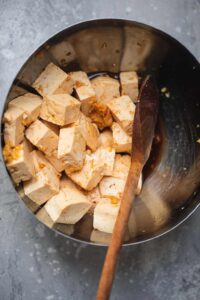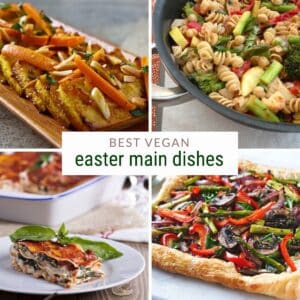 In preparation for reviewing Mimi Kirk’s colorful and lively book on raw food cuisine and lifestyle, Live Raw: Raw Food Recipes for Good Health and Timeless Beauty,* I interviewed her and was thrilled with here detailed, informative answers. Mimi’s insights open a window into the pleasures and benefits of raw food.
In preparation for reviewing Mimi Kirk’s colorful and lively book on raw food cuisine and lifestyle, Live Raw: Raw Food Recipes for Good Health and Timeless Beauty,* I interviewed her and was thrilled with here detailed, informative answers. Mimi’s insights open a window into the pleasures and benefits of raw food.
Nava: Mimi, your current claim to fame is that you won PETA's "Sexiest Vegetarian Over 50" contest when you were actually over 70! And in interviews I've seen with you, you do look remarkable. You attribute your energy and youthful appearance not only to your vegan diet, but to the fact that you follow a raw food regimen. How strict are you— are you 100% raw? And how long have you been eating mainly raw foods?
Mimi: I’ve been eating raw foods for about 4 years now. I continue to stay 100% raw except for a taste of a vegan dish I might fix for my boyfriend. Cooks have to have a little taste to see if everything is good, but I really don’t eat anything but raw. No need to as I find raw food really delicious. It does take a little time when one starts eating raw to get the “hang” of fixing food, but to me, it’s a challenge and an art. Once you “get it” it will be just like when you first learned to cook and only gets easier.
Nava: Looking at photos of you in your book Live Raw, it's apparent that that you have been blessed with classic good looks in the first place, but it is truly amazing to attach that number—nearly 73—to those photos. I'm sorry if everyone who interviews you dwells on your age, but it is truly inspiring, and obviously, what you radiate outward is a reflection of the health and beauty inside of you. Do you feel that you experienced a sort of reverse aging process, first when going vegan, and then, going raw? And if so, how did that manifest?
Mimi: I don’t mind dwelling on my age, I’ll be 73 in September [2011]. Years ago I didn’t like to tell my age, but now I love it. If it helps people see that we can be healthy as we age, and break some of the stereotype of aging, then I’m thrilled. I did feel a reversing of the aging process when I went raw. First off, I’ve been a vegetarian or vegan for the better part of 40 years. I say the better part as I went off this way of eating short periods of time, then would go back again. But when I felt arthritic pains in my joints, and my blood pressure and cholesterol were up, I decided to look into eating raw. The first week on a detox of veggie juice, salads and no oils or fats, I knew immediately I had found something special. My energy shifted, my joint pains went away, and amazingly enough, I thought I looked younger. My skin looked better. Now, my blood pressure and cholesterol are down.
Nava: Even though the interest in raw foods is growing rapidly, the prospect of a raw or mostly raw diet is far from mainstream (especially the further you get from California!). A few weeks ago, I decided to try to eat 60% to 75% raw this summer, when it's easier to do so. If someone isn't likely to go totally raw, at what percentage point do you think enough benefits will kick in? Is 50% enough, or not?
Mimi: You are right that raw food interest is growing rapidly and soon it will be in the category of vegetarian and vegan. I know we are lucky in California, but I have friends all over the country, and the world for than matter, and they find a way to enjoy raw food all year round. I do heat my food in a dehydrator and make warm soups. We just have to plan ahead. Freezing some foods when in season allows more enjoyment during the colder months. But it’s true, I’m spoiled in California, but seem to do just fine when traveling to other cities during colder months. I think if someone was serious about experiencing ultimate health, then 75-80% raw is what I recommend. But if 50–60% is all one can do, it’s better than nothing.
Nava: A bit of a devil's advocate question: What would you say to those of us who just can't get into the whole sprouting and dehydrating thing? What do you feel is the downside to eating, say, cooked quinoa or black beans rather than soaking and sprouting them 3 days before you want to eat them?
Mimi: I think the downside might be in the digestion, but I do think that both quinoa and black beans are healthy vegan foods. I don’t like to really be dogmatic and claim to know what’s best for other people, we all know our bodies best. Raw food is a commitment for sure, and sometimes it takes people years to move in that direction. I always tell people to just do their best and try to include some raw foods in their meals daily. Sprouting brings fresh, high protein food into your kitchen all year round. No outside garden needed. A great source of intense vitamins.
Nava: For those who want to eat more raw foods, even if not going totally raw, your book is lively, colorful, and inspiring. There are certainly many machine-free recipes to choose from for the beginner or uninitiated. Are there any categories of raw foods for the beginner, other than the obvious, salads, that you think are good places to begin?
Mimi: Live Raw* has lots of recipes that can be adjusted to each individual need. I think the Pasta alla Checca, is a great one. Although I use a tool call a spiral slicer, I also suggest using a potato peeler for an alternative fettuccini shape noodle. I warm this dish in my dehydrator, but it works just as well in a double boiler just to heat a bit, or room temperature if desired. Some of the dishes I make can also be heated in the oven at the lowest temperature, with the door left slightly ajar. I would also include the lettuce wraps as they are quite amazing along with nori wraps and take minutes to prepare. I consider both main courses.
Then there are soups that are warm and satisfying, but I do think when one makes the commitment to include more raw food in their diet, the proper tools make everything so much easier. Just think about it, raw bread for sandwiches, and crackers for dips and raw cheese, these can really make the difference on the percent of raw one might eat. So I recommend a dehydrator, blender and food processor for the more serious raw foodie.
Nava: I recently got a spiral slicer. I think it’s the same one I see you using in your book or something very similar — the one by World Cuisine.* It’s a lot of fun and I especially enjoy making long “noodles” from summer squashes. But on to another question—raw foodists use quite a lot of soaked nuts, especially cashews, yet remain thin. Why so many soaked nuts, and why does this not make raw food people fat?
Mimi: Good fats verses not so good ones, nuts, and avocado to name a few are good for us. I get all the nutrients I need from the foods I eat, so I don’t overeat and I’m satisfied after finishing a meal. I don’t focus on weight I focus on health. I think that’s why normal diets don’t work. Dieting focuses on what’s wrong with us (overweight) so it has some negativity surrounding it. Eating for good health has a positive outlook. Dieting seems to keep people trapped in yo-yo dieting of loosing then gaining it back again. Even a vegan or vegetarian can eat unhealthy processed foods, but when you eat raw, that eliminates all that processed and gluten foods that puts weight on us. Although I love nuts of all kinds, and use them in my recipes, again, I don’t seem to overeat. A small very thin slice of cheesecake, and I’m completely satisfied.
Nava: Your raw cheeses look amazing. I can't wait to try them. Did you have to do a lot of experimentation in this category, and do you have a favorite? I was going to try the Basic Herbed Cheese, unless you convince me otherwise.
Mimi: The cheeses in my book are quite delicious and I fool lots of non-vegans with them. They are not the fancy cheeses I use to enjoy, like Burrata, French Brie or other imported cheeses, but I don’t seem to crave those anymore since I perfected my recipes. Most of the cheeses start with the basic, cashews, or macadamia nuts, some probiotics powder, lemon and some include nutritional yeast. You can add herbs of choice after the cheese is cured overnight, and when the cheese is refrigerated it firms up and is really delicious. Just talking about it makes me wish I had some in the fridge right now.
I love my cream cheese on a raw bagel, with tomato, thin sliced red onion, capers and sometimes a piece of soaked Kombu, which is a seaweed and reminds me of smoked salmon. Raw cheese is great to have around to roll in a butter lettuce leaf with other veggies or a nori sheet. Also this cheese works great with my raw lasagna recipe.
Nava: I got a dehydrator last year that I just can't stand. It's noisy and cumbersome. If someone does want to go full in on raw foods, please explain the benefits of dehydrating vs. traditional baking. And is there a brand you recommend?
Mimi: A good dehydrator is like a good stove to me. I keep mine in the laundry room so I don’t have to here the sound, but mine although large, does not make that much noise. I own two dehydrators, the Excalibur* and the Weston.* I find dehydrators necessary to bake, make cookies, breads and to have warm meals. A dehydrator keeps food at the correct temperature, never over 115 and preserves the live enzymes where an oven cooks the food and enzymes are lost. I am quite organized and when I dehydrate, I make a large batch of bread, crackers, veggie patties, burgers, and other dishes, using all the shelves so I can have food for a week or two. So you can see, I lack nothing by eating raw food. I think my book has a great variety of foods people seem to crave when they ate the standard American diet and will find themselves very satisfied.
Nava: I'm no raw foods expert, but if someone asked me what category of raw food to explore first (once again, other than the obvious salads), I would say green smoothies. How about you? What category would you point a novice to?
Mimi: You are right. When someone asks what is the one thing they can do to improve their health, I answer “a green juice or smoothie”. Once someone starts drinking them, they start to feel better and are more interested in trying more of a plant-based lifestyle. When I miss a day, I can feel it.
Nava: And speaking of green smoothies, which of the green smoothie recipes in Live Raw would you like to share with VegKitchen readers?
Mimi: This is a basic one. You must find your way to make them taste great so you wake up wanting one. If they taste badly, you won’t want to try one again. I suggest you can add fruit like banana, mango, berries or other fruits in season to suit your taste buds. Organic of course and frozen is fine. Basic recipe as follows; 2 apples, 5 stalks celery, ½ cucumber 3 generous handfuls spinach. If you juice, you can place the juice in your blender and add the fruit. If you blend, you must add water approximately 1-2 cups, depending on how thick or thin you prefer your drink. I recommend adding the fruit for newbies, for a sweeter taste. There are many recipes in my book and I think all are delicious, I even included a collection of drink recipes from raw food chefs friends around the world.
Nava: How can readers connect with you?
Mimi: My website is youngonrawfood.com I post recipes weekly and have a “shop” for convenience, where people can see and purchase the products I use. (it’s through Amazon.) I also post a weekly Youtube video on Thursdays preparing different dishes. I think it helps people see how easy it is to make many raw food meals or treats. Go to YouTube and type in Mimi Kirk in the search area (see a sample video of Mimi making raw almond cookies).
Read the full review of Live Raw on VegKitchen.
*This post contains affiliate links. If the product is purchased by linking through this review, VegKitchen receives a modest commission, which helps maintain our site and helps it to continue growing!






Comments
No Comments